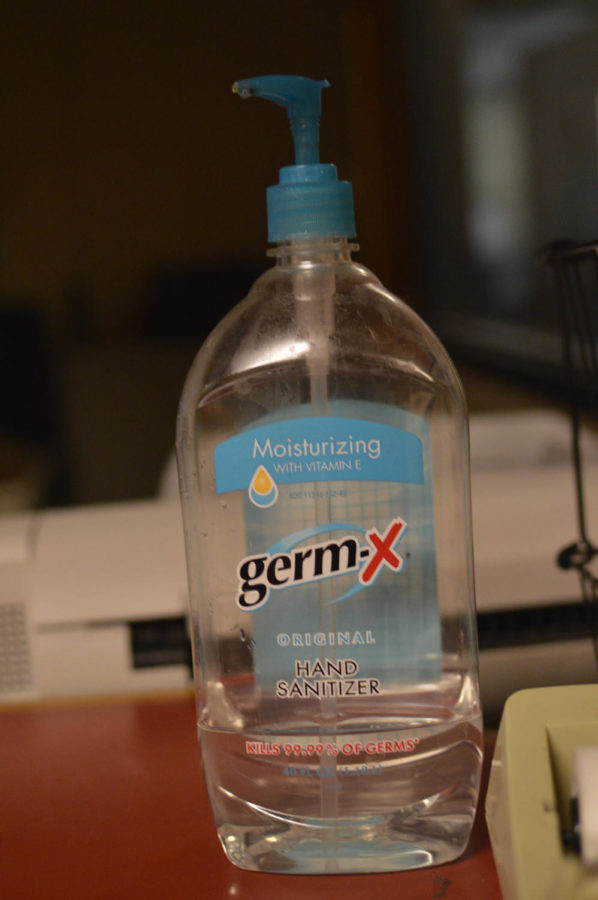Lawson: Hand sanitizers need component to deter kids from drinking
Charlie Coffey/Iowa State Daily
Columnist Lawson believes that chemicals like hand sanitizer should have a component added to create a bad taste to deter people from consuming the chemicals.
October 11, 2015
It’s a sweet-smelling, germ-killing machine and gets kids drunker than a Saturday morning tailgate. Unfortunately, I’m talking about hand sanitizer.
Hand sanitizer has been monumental and a vital ally in health care and school systems as an easy alternative to actually washing your hands. Since hand sanitizer was introduced to the mass market, it has been found everywhere imaginable, including homes, schools, hospitals and offices.
It’s reach knows no limits, and apparently, neither do its users.
Kids drinking hand sanitizer has become a national problem. Some drink it on accident because they think it smells good, so logically, they think it would also taste good. They run with the idea that “it looks like jello, smells like jello, so it would obviously tastes like jello.”
The other problem is teenagers, who drink hand sanitizer with the intent of getting drunk. Teenagers, unlike the small children who have been fooled by delightful scents, are knowingly drinking hand sanitizer for its alcohol content.
This unfortunate trend has been on the rise. In 2010, 3,266 sanitizer related cases were reported to poison control centers. That number increased to 16,117 in 2014. The increase in incidents can be related to the coverage and exposure of drinking hand sanitizer.
Most sanitizers on the market range from 45 to 95 percent alcohol, a perfect percentage to get drunk off of, and these teens have come up with some creative ways to maximize their alcohol consumption. They have been mixing salt in the sanitizer, creating chemical separation, so they can consume the most alcohol possible.
This type of “drinking” has several consequences these kids are not taking into account that far outweigh the brief time of being drunk.
Some reported side effects include diarrhea, blindness, organ damage and memory loss. These kids are not aware of the consequences and are cluelessly and desperately trying to get drunk, or have given into the peer pressure associated with underage drinking.
Unfortunately, this is just the latest trend in over-the-counter drunkenness. Other links to getting drunk have included drinking mouthwash, vanilla extract and the ever-popular cough syrup.
The societal effects are being experienced from the serious abuses of these products.
People under 18 cannot buy certain medicines because of the trends to use them to get high or to make products that have the ability to get them high.
Police are now asking stores to move their mouthwash and hand sanitizers and to not sell these products to someone who appears drunk.
People can reduce the number of kids and teenagers getting drunk from hand sanitizer by not buying the fruity-smelling “good stuff” and educating their kids about the harms of drinking it. Manufactures should encourage parents to buy foam sanitizer because it does not have the same chemical makeup, and it’s harder to separate the alcohol.
The solution is simple. Chemicals should not taste good. Paint thinner, window cleaner, bleach and all other household chemicals are harmful and don’t smell good. We should leave hand sanitizer with its normal smell and include a component with a bad taste, so kids will stop drinking it.

















